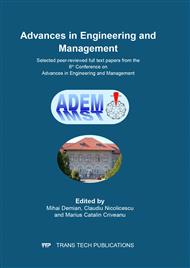p.25
p.31
p.37
p.47
p.55
p.63
p.71
p.81
p.87
Systemic Approach of Digital Competences Building at Teachers’ Level - Highest Necessity in SARS-CoV2 Pandemic Conditions
Abstract:
In the conditions of the SARS-CoV2 pandemic, education and training are predominantly online or hybrid. In this case, teachers and lecturers have at their disposal, in the activities of preparation of teaching units, as well as in the units of effective teaching or assessment of the accumulation of knowledge after teaching activities, various types of digital tools. Digital tools dedicated to teaching and learning are the defining factors for online and hybrid activities. They have the role of facilitating the teaching and training activity within each of the 3 moments mentioned above. However, in order to be able to use them, the teacher or lecturer or instructor needs a series of skills related to understanding, operating and streamlining the use of digital systems. The paper presents an analysis of the complex of knowledge and skills needed to use the main digital tools: knowledge and operation with digital information, knowledge and ability to use the online environment, knowledge and operation with various types of digital equipment and devices usable in the activity of training and assessment, knowledge and use of digital tools online and offline, the ability to communicate and interact digitally with partners in the training process and last but not least the ability to exploit the digital media environment. The full potency of these components depends on the nature of the information and implicitly the discipline taught.
Info:
Periodical:
Pages:
55-60
Citation:
Online since:
September 2021
Price:
Сopyright:
© 2021 Trans Tech Publications Ltd. All Rights Reserved
Share:
Citation:


